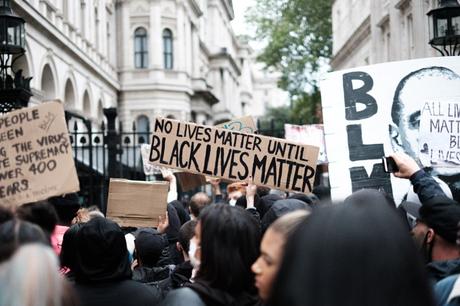
In 1963, George Wallace made his famous "stand in the schoolhouse door" speech where he attempted to prevent the desegregation of the University of Alabama. His now infamous "segregation now and forever" utterance before stepping aside and allowing the two Black students to enroll as he was physically removed by federal marshals was televised across the country and made him a national celebrity. Wallace would go on to serve three more terms as governor of Alabama, being elected a final time in 1982. Following that speech, Wallace received over 100,000 telegrams, over half of which came from outside the South, and 95% of which were supportive of his actions. This was a moment of revelation for Wallace. "They all hate black people, all of them. They're all afraid, all of them. Great God! That's it! They're all Southern! The whole United States is Southern!"
Historian and scholar Charles M. Payne writes about the conflicted significance of the 1954 Brown v. Board of Education decision and the ways in which it helps us understand how we view race today. The actual implementation of desegregation, as history recounts, was met with opposition in numerous states, and actual compliance with the ruling thoroughly stretched the meaning of "all due haste" as dictated in the Brown II ruling in 1955.
Payne points out that there is a history of confusing the real problem, and situating what was in fact a systemic issue as an interpersonal one. This early contextualizing, which predates the 1896 Plessy v. Ferguson decision, allowed for the idea that much of the problem inherent in racism were the prejudices of white people. This situating of the problems of racism as one of personal belief and interpersonal discordance allows for the overlooking of structural policies and laws which reinforce the oppressive forces that disproportionately impact minoritized individuals.
During the Jim Crow era in particular, segregation and the various adjacent policies were increasingly framed as ideological in nature, the product of differing customs and beliefs. There was a focus on "preserving our way of life" that made the issue one of personal belief and individual behavior, as opposed to structural oppression. This individualizing of the evil of racism as opened the door for the "reverse discrimination" arguments that continue to be popular today. Think "All Lives Matter" and you get the idea.
This desire to not upset white folks by illogically viewing structural changes as taking away something (i.e. the "handouts" trop) was in many ways best explained by the notion of interest convergence, one of the central tenants of the oft discussed Critical Race Theory. Brown then serves as a perfect example of this tenant in action, as it provided a small gain while not upsetting the overall power structure.
The focus on morals, values, and beliefs has been intentional since at least the end of the Civil War. As Payne points out, the argument can be made that the South actually won the war on ideological grounds. The concessions that were made and that ultimately led to the continued structural oppression were in large part the result of the focus on individual beliefs, individual liberty, and the way it shaped how we thought about the war and the turbulent decades that followed.
Wallace's statement in 1963 was a recognition of the impact that the ideological slight of hand had been having on this country for many years. It was clear to him that as long as the fight remained personal and tapped into the unconscious fears born out of hundreds of years of stereotypes and prejudices, then there was no need to worry about the structural changes that actually threatened the power and privilege that white folks continued to wield. The country had learned to understand race in southern, which is to say personal and non-structural, terms. Until we move past the "one bad apple" framing of racism in this country, we won't see the types of structural changes that are needed for a cultural shift.
